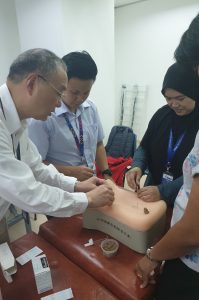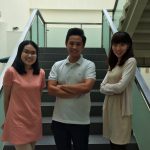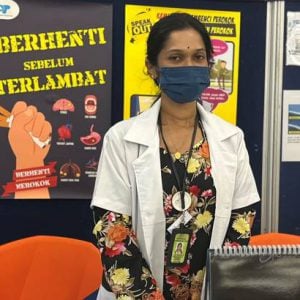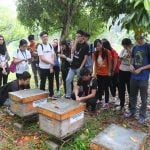A major shift in how people think about their health and well-being from the conventional approach to finally realising the X-factor of traditional and complementary medicine (T&CM) is gradually becoming more mainstream – like Acupuncture, Chinese herbal remedies and Chiropractic care. “Complementary medicine” refers to practices outside Western medicine, adopted from other cultures while “Traditional medicine” covers a range of practices and therapies indigenous to their practising population. T&CM is used among culturally and linguistically diverse populations including Malaysia.
Acupuncture have lobbied for a bigger role in treating pains today. You may have experienced the benefits of needle in easing your pain or perhaps your friends or family members have attempted one of these natural pain reliefs. Despite the fact that the tiny needle is becoming more popular and accepted round the globe, a host of critiques on the wide use of acupuncture remain a placebo note. Like many other alternative therapies, acupuncture has plenty of facts and fiction surrounding it. Is acupuncture really safe? Conceptually, acupuncture is one of the main arm of Traditional Chinese Medicine (TCM) practice that is used to prevent and treat many conditions grounded on holism approach – that is treating the whole body, rather than targeting the problem alone. It involves the insertion of thin needles into the skin to stimulate nerves, muscles, and connective tissues throughout the body with the goal of alleviating pain, tension, and stress. More broadly, it is believed the power of needle may stimulate the body’s meridians, or energy-carrying channels, in an attempt to correct imbalances and to restore health. 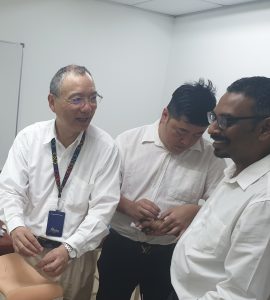 Recent reviews found that acupuncture may enhance endogenous opiates, such as endorphin, encephalin, and release corticosteroids, relieving pain and improving the healing process. These benefits are thought to be derived from the proximity of acupoints with nerves through intracellular calcium ions. This outlines a brief framework of acupuncture theory and how it may be used to cure a number of pain matters in specific physical and emotional medical conditions. Medicine has benefited from scientific study for many years. While TCM focuses on how acupuncture balances the flow of energy, Western medicine has found that acupuncture can work as a treatment for many conditions, but has not fully determined how it does so. Can science help us figure out whether acupuncture works? Interestingly, some medical professionals are finding answers through engaging acupuncture studies professionally. Two IMU Master of Science in Acupuncture students cum practising doctors are charting their acupuncture interest earnestly.
Recent reviews found that acupuncture may enhance endogenous opiates, such as endorphin, encephalin, and release corticosteroids, relieving pain and improving the healing process. These benefits are thought to be derived from the proximity of acupoints with nerves through intracellular calcium ions. This outlines a brief framework of acupuncture theory and how it may be used to cure a number of pain matters in specific physical and emotional medical conditions. Medicine has benefited from scientific study for many years. While TCM focuses on how acupuncture balances the flow of energy, Western medicine has found that acupuncture can work as a treatment for many conditions, but has not fully determined how it does so. Can science help us figure out whether acupuncture works? Interestingly, some medical professionals are finding answers through engaging acupuncture studies professionally. Two IMU Master of Science in Acupuncture students cum practising doctors are charting their acupuncture interest earnestly.
| Dr Goh CL, Head of the Traditional & Complementary Medicine Unit in Hospital Duchess of Kent Sandakan |
|---|
| Dr Goh CL encourages primary healthcare staff to integrate acupuncture practice for the benefit and good outcome of the patients. She opined fast action on pain management to prevent acute pain from eroding to a chronic pain is working well with acupuncture procedure in her day-to-day medical routine and become her preferred choice of treatment. The benefit of introducing non-pharmacological technique of acupuncture can significantly reduce the prescription of multiple type of pain relief medications to patients, thus avoid over-dependence of pharmacological actions. “It crosses my mind, what is acupuncture and how does it work as a human pain pathway in promoting pain relief? I enrolled into IMU’s Master of Science in Acupuncture programme without hesitation and have a great opportunity to delve into the knowledge model of Chinese Medicine including its diagnosis principle, channel and collateral system and acupoint theory exclusively. Alongside my allopathy medical training, the TCM knowledge and acupuncture basis have provided me an option to deal with pain complaints more confidently” she added. |
| Dr CY Liu, Veteran Medical Professional in Anaesthesiology |
| Dr CY Liu shared growing up in a Chinese family and having always heard of the elders talking about avoiding “heaty food” and noticing the excessive abstinence (pantang in Malay) elders imposed on a post-natal lady to prevent “cold”. He had always questioned these beliefs and attributed them as superstitious and ridiculous. “I was lucky to get into medical school, graduated and trained to be an anaesthetist 15 years ago. I have been privileged to be accepted as one of the lecturers in a public university that train anaesthesia doctors in their master degree. This line of work and teachings are evidence-based from research studies conducted. Anaesthetists prepare and administer drugs ourselves. We see the effects and sometimes, the side effects immediately. Anaesthetic drugs are the pearl of our practices. However, this changed when I found out that cases of surgery were being performed with acupuncture alone, without any drugs whatsoever. That was when my curiosity grew and the desire to learn about acupuncture started. I soon came to learn that there are structured Traditional Chinese Medicine (TCM) courses available that is recognised by Malaysian Qualifications Agency (MQA). Upon enrolling into the course (IMU’s Master of Science in Acupuncture programme), we were taught on the principles and fundamentals of TCM but in modernised western medical terms. The practical sessions were conducted in similar standards of any western medical schools”. He further said “The fundamental of TCM originated more than two thousand years ago and it may seem ridiculous to western medicine, but there is actually huge amount of published scientific evidence on the benefits of TCM treatment. The efforts by our Health Ministry to integrate TCM and western medicine is a proof that both disciplines can complement each other, something that has been practised by China decades ago. In the case of west meets east, I have now come to realise the root of avoidance to “heaty food” and vigorous abstinences after delivery of a baby are not so ridiculous after all. A stand-up comedian once made jokes about TCM, but the laughter were from those who were in ignorance.” |
Obviously, it is an embodiment of the ancient wisdom of TCM and a reflection of the uniqueness in Acupuncture science, the call is professionalised not penalised the odds. However, a substantial gap still exists between the strength of evidence supporting many of this practices and consumers’ use and acceptance when compared to traditional methods of pain management. Despite promising results, more studies are warranted in order to establish the efficacy of acupuncture and its place in pain management.





